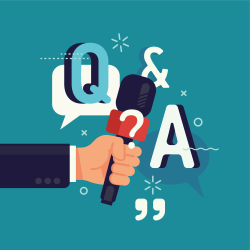Immunopathology | Professor Paul Kaye

How does the immune system respond to SARS-CoV-2 on a molecular and cellular level and what happens when the immune system overreacts? Researchers focusing within Theme 3 are exploring, in microscopic detail, how the immune system reacts to SARS-CoV-2. Importantly, they are working to understand how it may overreact in some patients, leading to severe symptoms and widespread problems in the body. Understanding more about this can help us manage COVID-19 in many ways, through from prevention methods to treatment.
Theme 3 Lead, Professor Paul Kaye, has answered some common questions about our understanding of the molecular response of the immune system to the coronavirus. These questions will be updated and added to over time as our understanding develops and priorities for research change.
I’ve heard about something called a ‘cytokine storm’ – what is it and does it happen in COVID-19 patients?
"Cells in our immune system communicate with each other by releasing small proteins called cytokines, and the amount and combination of cytokines, like letters in a word, spell out how immune cells should behave. The term ‘cytokine storm’ applies to a potentially life-threatening situation where cytokines are over-produced, leading to hyperactivation of immune cells and multi-organ inflammation and tissue damage. A cytokine storm may arise in patients with an autoimmune condition, on different types of therapy or after certain infections. Diagnosis of a cytokine storm can be challenging, but usually requires: measuring higher levels of cytokines in blood, evidence of acute inflammation around the body, and evidence of organs not working as they should (often kidney, liver, or lung) that is not usually seen in the diagnosed condition. It has been proposed that the multi-organ damage seen in COVID-19 patients is the result of a cytokine storm. Treatments used to alleviate a cytokine storm may be effective treatments, for example a drug called tocilizumab which recently demonstrated in a clinical trial that it is of benefit to patients with COVID-19."
Can the immune system overreact to the virus? What does this mean? How often does that happen?
"Our immune system has specific cells (called T lymphocytes) that are designed to kill virus infected cells. If there is a large amount of virus in a tissue, too many cells may be killed leading to loss of function in the tissue. In addition, the large number of T cells responding to the virus may increase the number of cytokines being released to dangerous levels and can trigger unwanted effects (see question above). There may also be shedding of viral proteins from infected cells to uninfected cells, making these potential targets for attack by T cells or other immune cells too, and increasing the amount of tissue damage. A small amount of cell death always results from virus infection and is necessary to eliminate the virus – in many diseases the resultant clinical signs of the infection reflect this. However, normally the immune system aims to get a balance between how well it tries to eliminate the virus and how much damage it causes. When this balance is not correct, the patient may not be able to control infection (too little) or have more severe symptoms caused by the immune system attacking tissues (too much)."
Can we prevent the immune system from overreacting to the virus?
"In principle we can if we understand how and where these reactions occur and that is one of the main goals of Theme 3 of UK-CIC. If we know which types of cells are responsible for this overreaction, it may be possible to remove them using antibody therapies similar to those used in autoimmune diseases, or therapies that affect their function. If a cytokine storm is shown to be an important factor in COVID-19, we can apply our knowledge of how cytokines interact with each other to form the messages of the immune system. Often cytokines work in a cascade fashion, with one leading to the production of another, so targeting cytokines at an earlier stage in that process can have a more significant effect than targeting them at a later stage. The cytokine IL-6 occurs near the start of the pathway that leads to cytokine storm in other conditions and we can prevent its effects by using the monoclonal antibody drug Tocilizumab, which binds to the IL-6 receptor on cells. Clinical trials of tocilizumab in COVID-19 patients have reported a benefit to patients, with fewer patients who were prescribed tocilizumab requiring ventilation or dying."
This page was last updated on: 15/01/2021
